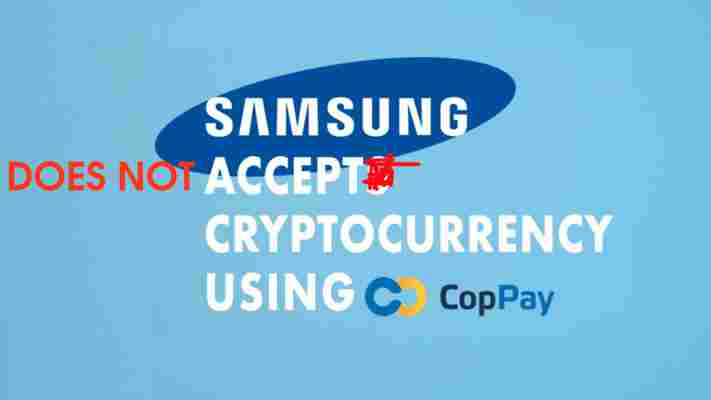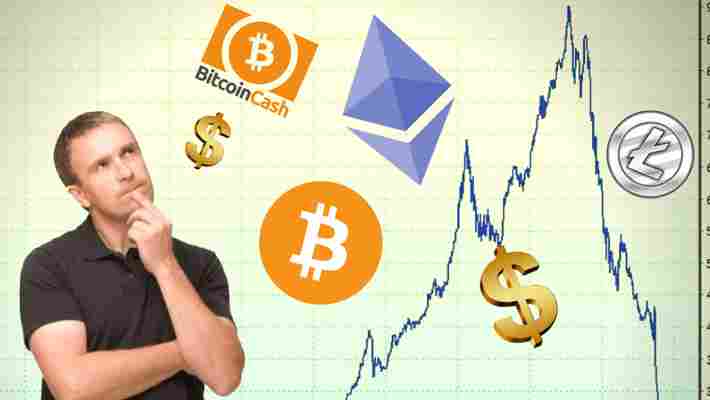Japanese chat giant Line launches its cryptocurrency exchange – but not in Japan
Months after announcing it in January , Japanese messaging giant Line has finally opened their new cryptocurrency exchange – everywhere except Japan and North America.

BITBOX is now hosting trade in around 30 coins, sans fiat trading for the time being. No hint as to a date proposed to support local currencies, or even in which country they would be offered.
They have interestingly opted for Tether (USDT) as it’s ‘ stablecoin ‘ of choice – mirroring other major platforms who operate primarily without the support of a financial institution. Bitcoin, Ethereum, and Bitcoin Cash are currently the only coins with direct trade to USDT.
The cryptocurrency exchange will serve as the flagship platform of the company’s new division, the Line Financial Corporation. The last official Line service to launch was Line Pay, which has grown to over 40 million registered users. Its global transaction volume has hit $4.1 billion since opening in 2014.
Whether or not BITBOX will succeed in leveraging the 200 million monthly active users currently using the Line messaging app is really up in the air. Line Pay had the considerable advantage of being fully integrated with the messenger. That, and it was actually available in Japan.
The launch also reveals a big win for security firm BitGo, whose technology will power the exchange’s hot and cold wallets.
All eyes will surely be on the effectiveness of their large scale storage solutions. After all, it was the hack of fellow Japan-native Coincheck – still the world’s biggest theft – that kickstarted the wave of government crackdowns responsible for the ironic exclusion of Line’s primary market in today’s launch.
No, Samsung will not be accepting cryptocurrency payments in the Baltics
A rumor circulated last week that Samsung had entered a partnership with obscure Lithuanian blockchain startup, CopPay, that would make it possible for customers of the electronics giant in three Baltic states to pay for in-store purchases with cryptocurrency.

But now it seems that there was never a collaboration between the two companies in the first place. A Samsung spokesperson has denied the partnership in an exclusive email to Hard Fork. “Our official response is that the rumor is not true,” the Samsung rep told us.
The supposed partnership was announced through a post on CopPay’s Medium blog, which has since been deleted (you can still access an archived version here ).
The news was subsequently picked up by numerous cryptocurrency and blockchain outlets, including Cointelegraph and Bitcoin News – though the some of these publications have since quietly removed the post .
It was to be a rather lucrative deal that would see CopPay install cryptocurrency-focused merchant gateways in 10 physical Samsung stores across the Baltics. Among others, the announcement promised support for Bitcoin, Ethereum, Litecoin, Ripple, Dash, Nem, and Steem.
( Correction: This piece initially indicated the payment system will be integrated in 31 Samsung stores. CopPay has since clarified that 31 reflects the number of stores in its entire merchant network in the Baltics – some of which, have nothing to do with the South Korean electronics behemoth.)
CopPay even bragged that Samsung had rallied under their inspirational slogan “Turn On Future,” effectively “embracing” cryptocurrencies by using their payment system. ( Correction: We initially referred to CopPay’s product as a point-of-sale device, the company has since clarified it merely develops software solutions. )
But, all of these plans are now gone, with no explanation as to why the misleading announcement was made in the first place.
Before publishing this story, we did contact CopPay for an official comment, but they chose not to respond directly to us. Instead, they insisted they were speaking with Samsung – which, at the time, was coincidentally confirming with us that it was purely an unsubstantiated rumor.
Fake partnerships have been a common occurrence in the industry for quite some time now. Back in March, cryptocurrency startup carVertical impressed many with its announcement of a freshly-inked deal with German automobile manufacturer BMW.
That, just like CopPay’s announcement, turned out to be, well, simply not true. They were simply using data retrieved from BMW’s CarData interface to test its shared car-data blockchain platform. That data is available to any third-party, no partnership required.
Technology mainstays like Microsoft haven’t been immune to fake partnership announcements, either. Last November, IOTA revealed its new data marketplace platform in a massive announcement that included the software giant as a direct partner. In the immediate aftermath, IOTA’s market cap amazingly grew from $2.95 billion to over $13 billion.
A few weeks later, Microsoft stepped forward to clarify it had no official partnership with IOTA.
Despite the misleading CopPay announcement, it is worth noting that Samsung are not completely ambivalent to the benefits of blockchains.
In April, Bloomberg reported it was looking to cut shipping costs by 20 percent by incorporating distributed ledger technology into its supply chain. The South Korean electronics titan is also reportedly preparing to mass-produce cryptocurrency mining hardware capable of mining Bitcoin and other cryptocurrencies.
It was also revealed just last month that Samsung SDS, a subsidiary, is developing an open-source, blockchain-based finance platform for managing digital identities , automatic insurance payments and other consumer-level financial services.
Update 17:55 UTC, 23 July: Following our coverage, CopPay CEO Ina Samovich contacted Hard Fork to insist that the partnership with Samsung is real, blaming the botched announcement on a communication mishap with an unnamed “reseller.”
“ The official reseller has singed agreement with our company and several transactions occurred during last two weeks,” she told Hard Fork. “So we can prove that the crypto payment method was used and was powered by CopPay. We were not aware that reseller did not inform HQ about our cooperation.”
We’ve asked for further proof and will update the piece accordingly, if we receive it.
Meanwhile, Samsung continues to insist there is no partnership in place – and that anything else is merely rumors and speculation.
Update 11:15 UTC, July 24: Samovich has since released a response to the Samsung announcement controversy, claiming the collaboration agreement has been withdrawn (despite having already been signed).
Here’s what she had to say:
The full statement can be found on CopPay’s Medium page here (archived version here ).
Update 15:20 UTC, July 25: Following our coverage, CopPay insisted there were some factual inaccuracies in our reporting. We’ve issued corrections (see above) to amend any inconsistencies.
One thing is for sure though: Samsung has no plans to start accepting cryptocurrency payments in stores for the time being.
What is the true value of cryptocurrencies?
Nine years ago, when “Satoshi Nakamoto” released the research paper titled, “ Bitcoin ,” she/he/they laid the foundation for the cryptocurrency craze we’re experiencing today.

Despite the spike in popularity of cryptocurrencies, not everybody is fond of them. People call cryptocurrencies with all sort of names, like “speculative bubble,” “ponzi schemes,” “get-rich-quick schemes,” and sometimes simply “fraud.”
Most people are cryptocurrency skeptics because they question its intrinsic value, which is somewhat fair, but what exactly does intrinsic value mean? And should that affect how we view cryptocurrencies?
What is value, anyway?
It’s such a simple question that is extremely difficult to answer. In order to get closer to the answer, the best way is to ask a few more questions. Sounds counter-intuitive, but trust me, it will get us closer to the truth:
Why do some pens cost $10 while others cost over $500? After all, all pens serve the purpose of writing and have relatively similar ink inside them.
Why do some paintings cost $500 while others cost $500M? After all, all paintings are just the strokes of paint on a blank canvas.
Why are gold and diamonds valued so high even when they don’t have any use other than making great gifts? They are both called a “store of value” but what commands the price tag that they carry?
Why is a $10 bill valued at $10?
The value of something is the price that the buyer is willing to pay and the seller is willing to accept. At the end of the day, it’s a story, dream, or vision that one buys and sells.
The story behind the $200M painting is that of Picasso. The story behind the $500 pen is that of making you one among the elite. The story behind gold and diamonds is that of scarcity. It’s always the story that gets baked into the value of something. Credit: Mohit Mamoria So what’s the story behind that $10 dollar bill? Simply, the story is that the government which issues the tender for the bill values the paper at $10. There is no gold, oil, diamonds, coffee beans, or anything else that backs the value of that bill. Want to trade it in for your $10 share of gold? Good luck.
The truth behind fiat currencies
A fiat currency, like the US Dollar, is a currency that is backed by the government that issues the money but isn’t backed by a physical commodity. To put this in context, similar to cryptocurrency or any other store of value, fiat currency is an object, in this case, paper, that a group of people assigns specific value to.
The value can fluctuate based on supply and demand, or the price that the people are willing to pay for it. Most modern fiat currencies are nothing more than a piece of paper that the issuing government attributes value to. And because we trust the government that attributed the value to it, we trust in the value of the paper.
In fact, on closer inspection, you can see that not all of our money is actually represented in paper form. Most of it is just numbers in the digital database that banks maintain for us. Fiat currencies, like dollars, at the most fundamental level, are just a game of collecting “points” that are tracked in the bank’s database, in its centralized ledger.
Many people — perhaps even most people — see the whole cryptocurrency world as an extremely volatile market that’s built on nothing but hype. But if you think about it, nearly every market today is based on some form of hype — they just didn’t have as bad publicity as cryptocurrencies got.
Take the stock market for example. While Apple’s shareholders are keeping a close eye on the balance sheet, milestones, new products, and other metrics, much of the value is derived from the supply and demand and market sentiment for Apple’s shares. When a company IPOs, many investors invest their capital based on the hype of what the shares will be worth in a month, year, or decade.
Long-term investors don’t invest based on the value of something today. They invest based on the value that something will become over a specific time horizon. Assuming that case to be valid, that would mean that most long-term investment is based on speculation as well.
Another popular example is art. The price of a painting is not based on the brightness of the colors it is painted with, the years of experience that the artist has, or the quality of the canvas that the strokes of colors are painted on. The artwork is based on the intersection between where the buyers are will to pay for it and what the sellers are happy to accept as payment.
Behind this intersection is a story. As mentioned earlier, people don’t buy a Picasso because of the quality of paint used, rather the history, the story, and meaning behind the brush strokes. It might sound strange, but this is also the case with the value of cryptocurrencies.
So, what’s the story behind cryptocurrencies?
Like everything else that is valuable, cryptocurrencies represent one such story of value too. Remember when we understood how money is just a game of collecting dollars or “points” that are tracked by the banks for on our behalf?
What if actors in bank decide to steal the money? What if the organization is secretly corrupt or unknowingly funnels a portion of your income to the less fortunate? What if the bank’s database is stolen or destroyed? There are so many what-ifs because everything is fundamentally based on one single thing — trust.
What if you are told that there could be a system to maintain the same database of who has how many points without the bank? What if there is no one that has to be fundamentally trusted to keep the integrity of the database?
That’s the story behind the cryptocurrencies. The story is that a mathematics-based currency is resistant to corruption and single point of failure than a politics-based currency. As a cherry on top, because mathematics is not limited by nations or geography, neither is the currency based on mathematics.
The story is also about a digital currency, an intangible currency that lives solely on the internet. While this might frighten some, it is already the nature of our financial system today. Most money lives on the servers of large institutions. Customers deposit money that appears in your account, while the tangible bills are loaned to others.
Why we’re bullish on cryptocurrencies
Cryptocurrencies represent more than just the ability to transfer money to your friends and family. Cryptocurrencies unlock a future where we can imagine the possibilities where we are all responsible for each other’s financial health.
As one of the greatest FinTech innovations in this history of mankind, cryptocurrencies change the story of how money is exchanged between people, businesses, governments, and more. The best innovations are the ones the challenges conventional norms.
Today, we are taught to trust institutions to safeguard our money. In a decade, we’ll look back from a place where the baseline is trusting in mathematics, networks, and computational power, all without a single point of failure. We will tell our children how it used to be with big banks and they won’t be able to fathom what we are telling them.
Just as Airbnb changed the status quo to turn your spare bedroom into a hotel, the concepts that challenge the way we interact with each other are the ideas that will prevail. This is why we’re bullish on cryptocurrencies. Although there are different coins with various utilities, the market as a whole is based on redefining the financial system and that’s what we believe in.
Conclusion
Is it all just speculation? Yes. Everything is.
Killing a decentralized network is harder to kill than to start. Take Ethereum for example. Even if Vitalik , creator of Ethereum, wanted to kill it, he wouldn’t be able to. Bcause Ethereum isn’t controlled by Vitalik himself. It isn’t controlled by anyone . Remember, Ethereum is not just a cryptocurrency, but a story. It’s impossible to kill a story that lives in the minds of millions.
Satoshi Nakamoto cast a large shadow when she/he/they published that research paper in the year 2008. The person may die, but the shadow lives on forever.
This article was co-written by Jordan Odinsky .

Leave a Comment